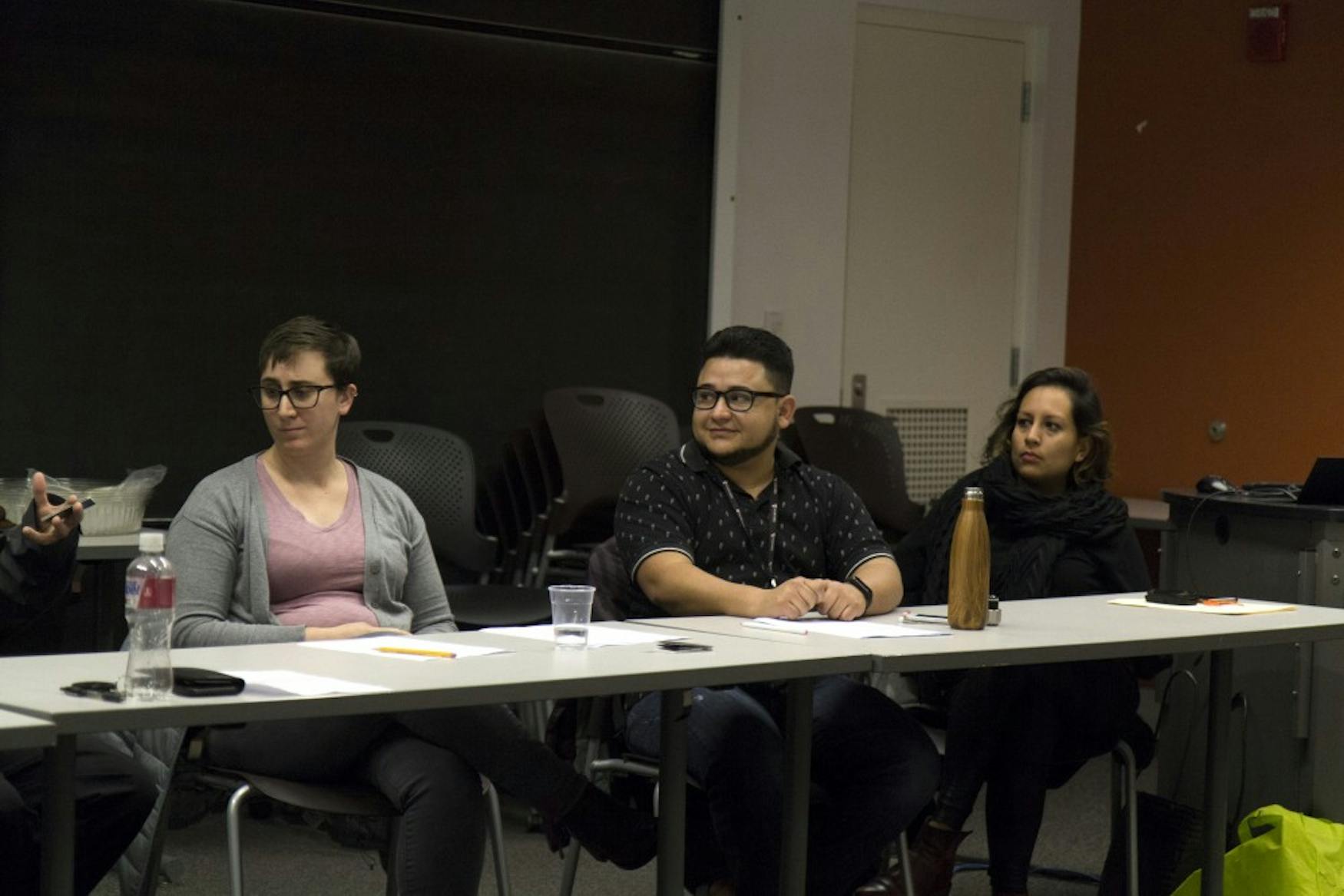Identity Awareness
A discourse on intimate partner abuse
Not long ago, domestic violence was regarded as a family issue. When police responded to a domestic disturbance call, they often told abusers to just take a walk. With the passage of the Violence Against Women Act of 1991, domestic violence shifted from being a “family” matter to a national, political issue. However, the criminalization of domestic violence did not solve the problem. And as people are increasingly entering and being abused in romantic relationships that are not heteronormative, the perceptions and discourse surrounding domestic violence have to change, according to a domestic violence panel.
The domestic violence panelists spoke during “Breaking the Silence: Confronting Domestic Violence in LGBTQIA Communities” event on Thursday in the Heller-Brown building. Among the panelists were Damián Lima — a member of the Health Equity Advisory Committee for the Boston Public Health Commission, Erin Miller, manager of the Newton Wellesley Hospital Domestic Violence program, and Lauren Montanaro, a Community Engagement Specialist at REACH, a Waltham-based domestic violence non-profit.
Sponsored by the Gender and Sexuality Center, Intercultural Center, Prevention, Advocacy & Resource Center and the Women and Gender Studies Department, the panel was moderated by Deirdre Hunter, a WGS lecturer.
“For many members of the LGBTQIA community around this country, there are really no support systems or resources available to them. When they do try to access support systems, they are met with homophobia, transphobia, and, sometimes, ridicule. We are quite lucky in the Boston area to have several agencies and resources that provide support specifically to LGBTQIA survivors [of domestic assault],” Ryan Mischler, the program administrator for Gender and Sexuality Center said.
The intimate audience consisted of undergraduate and graduate students as well as professional staff from PARC. They first listened to the panel speak about the importance of highlighting the issue of domestic violence in the LGBTQIA community. Montanaro said, “When I go out into communities and talk about domestic violence, I hear very gendered language. I hear about men who are abusive and women who are being abused. And that isolates so many people where that’s not their experiences. So, being able to raise awareness about this is crucial. There’s a lack of representation in general, but to think about abuse, it’s even less recognized. I think it’s important to talk about this because if we continue to shroud this issue in silence and in isolation, then we are doing a disservice to LGBTQIA survivors.”
Hunter elaborated on the importance of having this discussion take place on a college campus because “we have such a high number of relatively young adults who are having the opportunity to express themselves and their identities in maybe a different way than they did before. And identity exploration can be, and typically [is], really wonderful and exciting, yet there’s a whole lot of other stuff that comes with relationships. To not provide information and support, as a community, would not serve our students. I don’t want to be in a position where a generation says, ‘you never said that it could happen to queer folks too.’”
Because domestic violence is already an underreported issue, the panelists shared that the prevalence of straight male survivors, as well as the number of LGBTQIA-identifying people that have experienced partner violence, is relatively unknown. However, Lima shared that the relative lack of data does not mean that intimate partner abuse is any less common in non-heteronormative relationships.
While the panel was about the LGBTQIA community, panelists also discussed why domestic violence advocacy has to be intersectional. “If someone is in a relationship where they depend on their partner for citizenship, that gives them an incredible amount of power. They decide whether or not their partner can stay in this country. There are so many layers to this issue. And the justice system —in many ways—is blind to aspects of domestic violence,” Lima said about the lack of intersectional thinking in domestic violence policy.
Adding onto Lima’s example of a power dynamic stemming from immigration status, Montanaro also shared that many victims of domestic violence do not call the police or report their abuser out of fear that they or their partner will be deported.
“Countless times when I go out into the community and have conversations about what resources there are for survivors to access, instantly, I hear about restraining orders being an option. And they can be a life-saving option for so many folks. But you may not feel comfortable walking into a courthouse to file those orders for fear of being detained or having ICE being there,” Montanaro said.
The panelists ended by discussing their hope for the future of domestic violence advocacy. “I’m hoping to be here 10 or 20 years from now and because more young people are identifying as LGBTQIA: my vision of the future is that we won’t need LGBTQ-specific services because we’ll have a much more expansive view that’ll include everybody,” Miller said.
As the event closed, the panelists reflected on both the progress and the current shortcomings of domestic violence advocacy.
They hope that through authentic conversations and structural changes, the movement will become more inclusive.



Please note All comments are eligible for publication in The Justice.